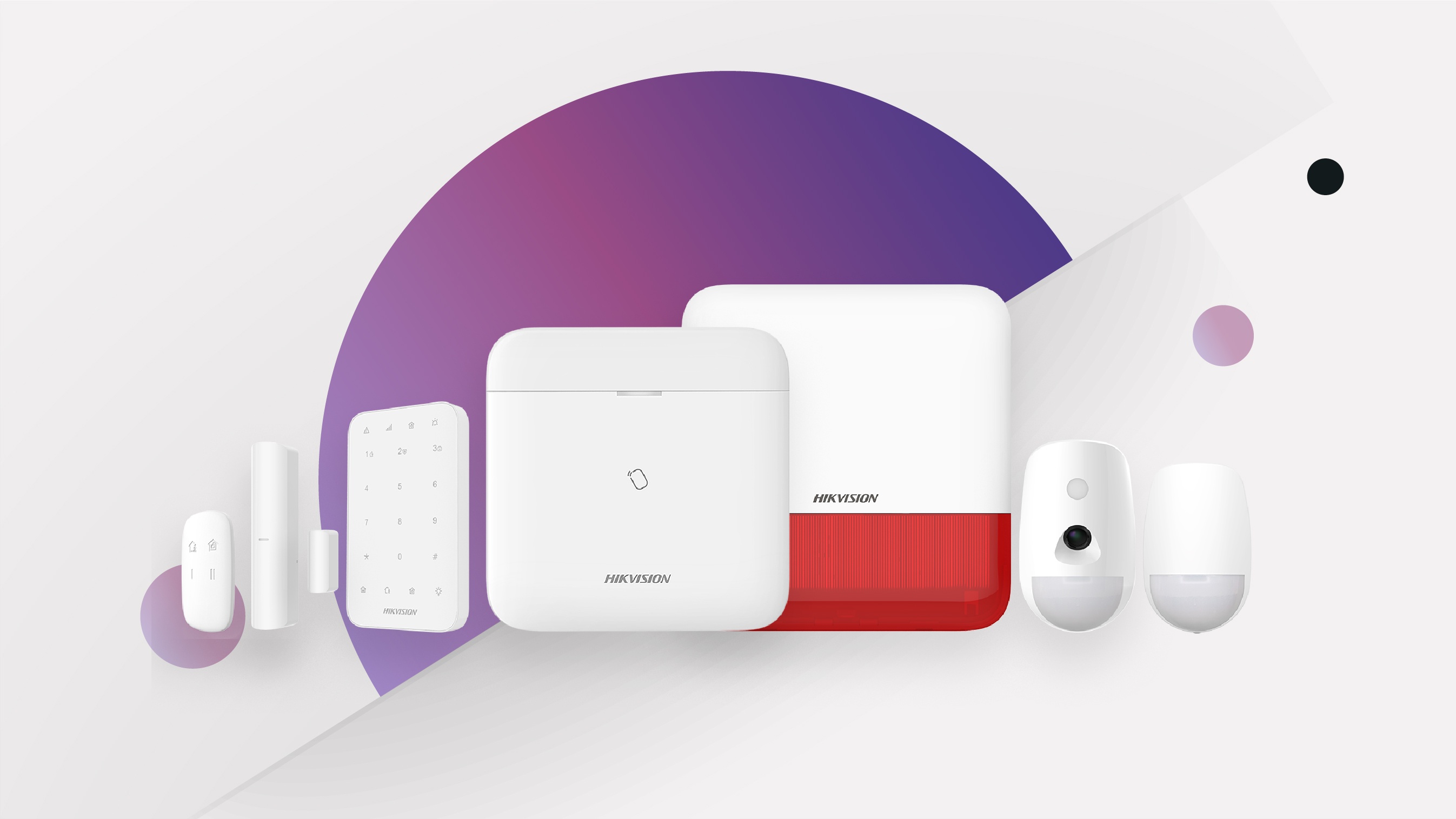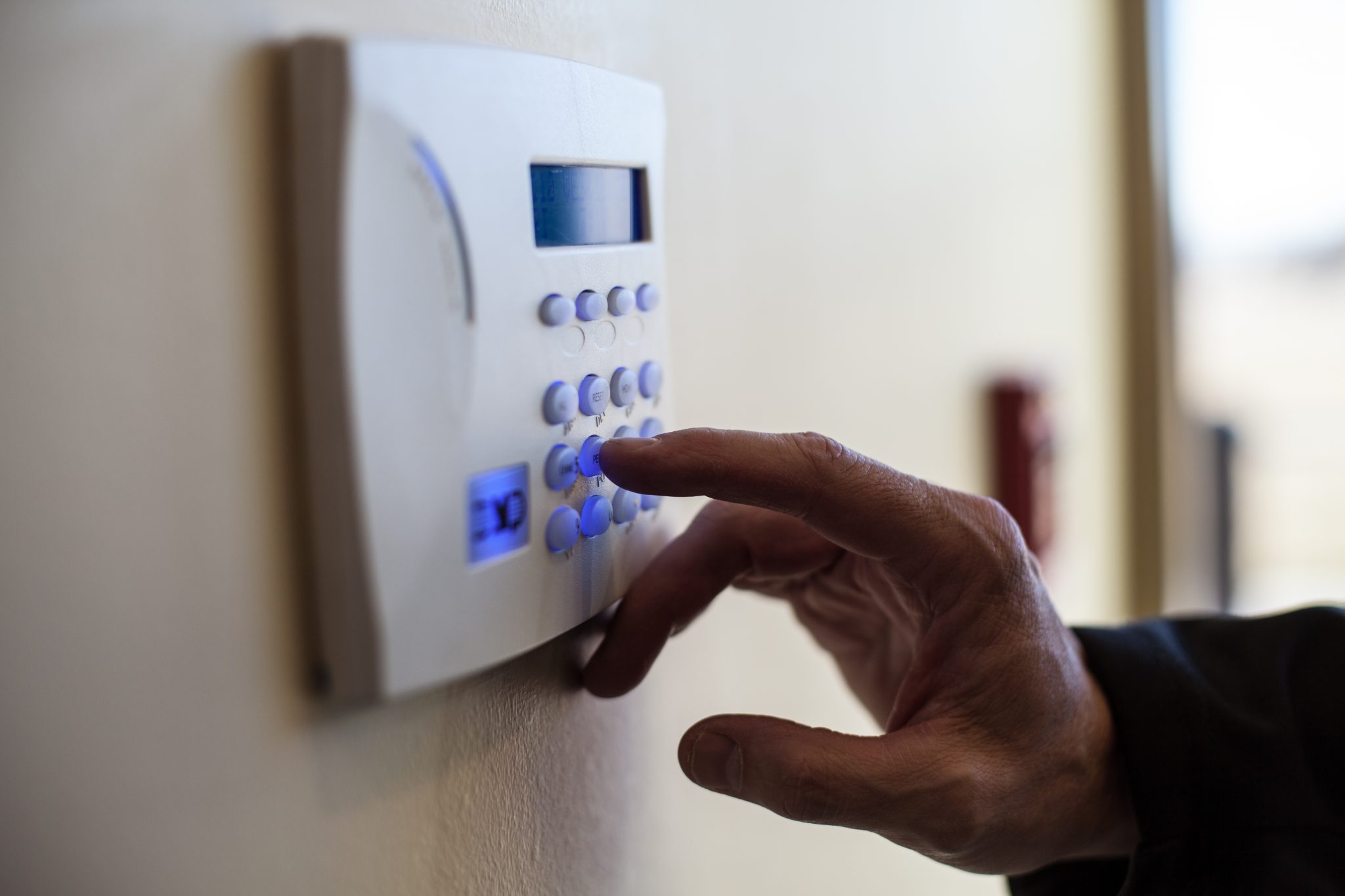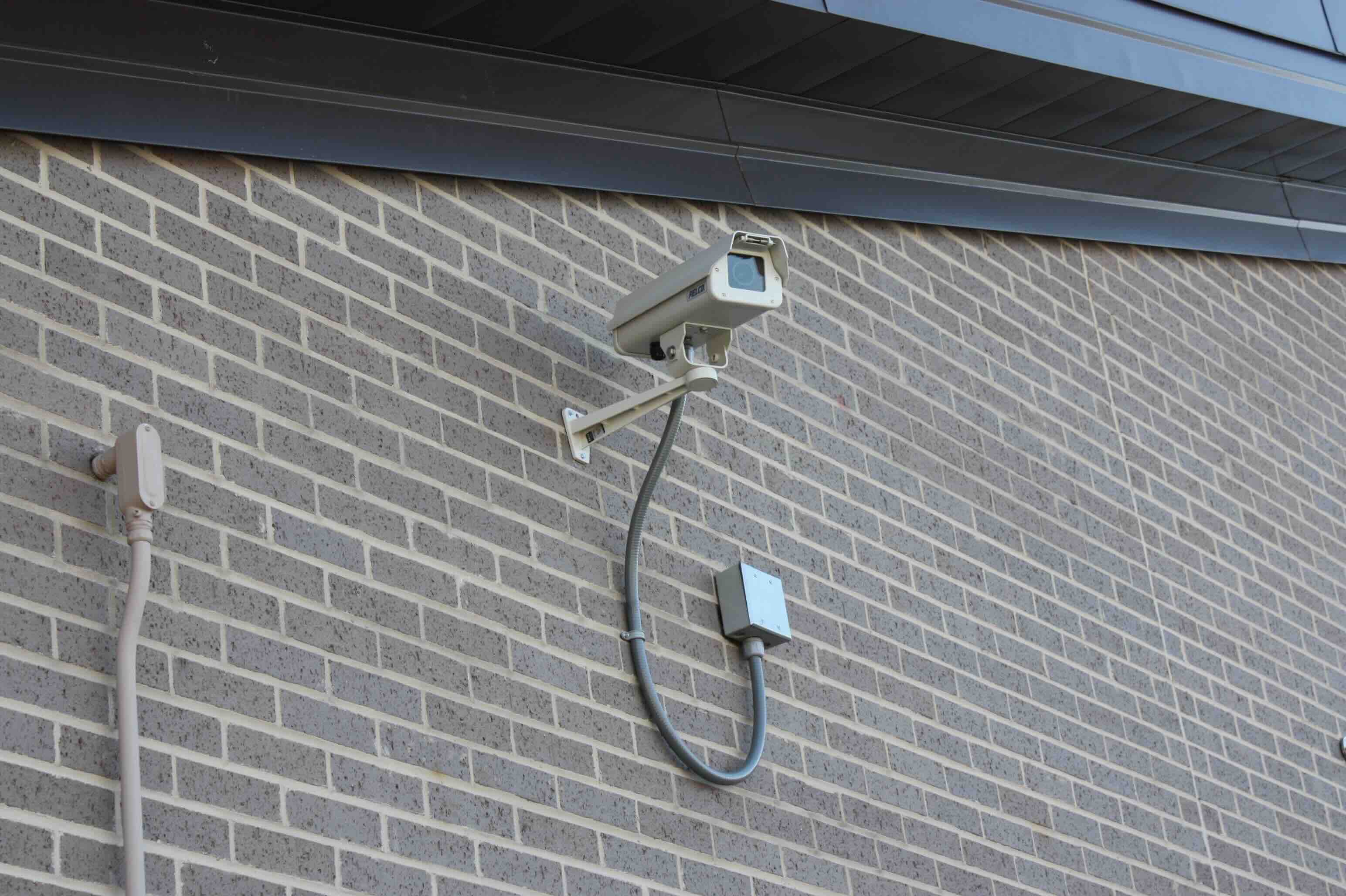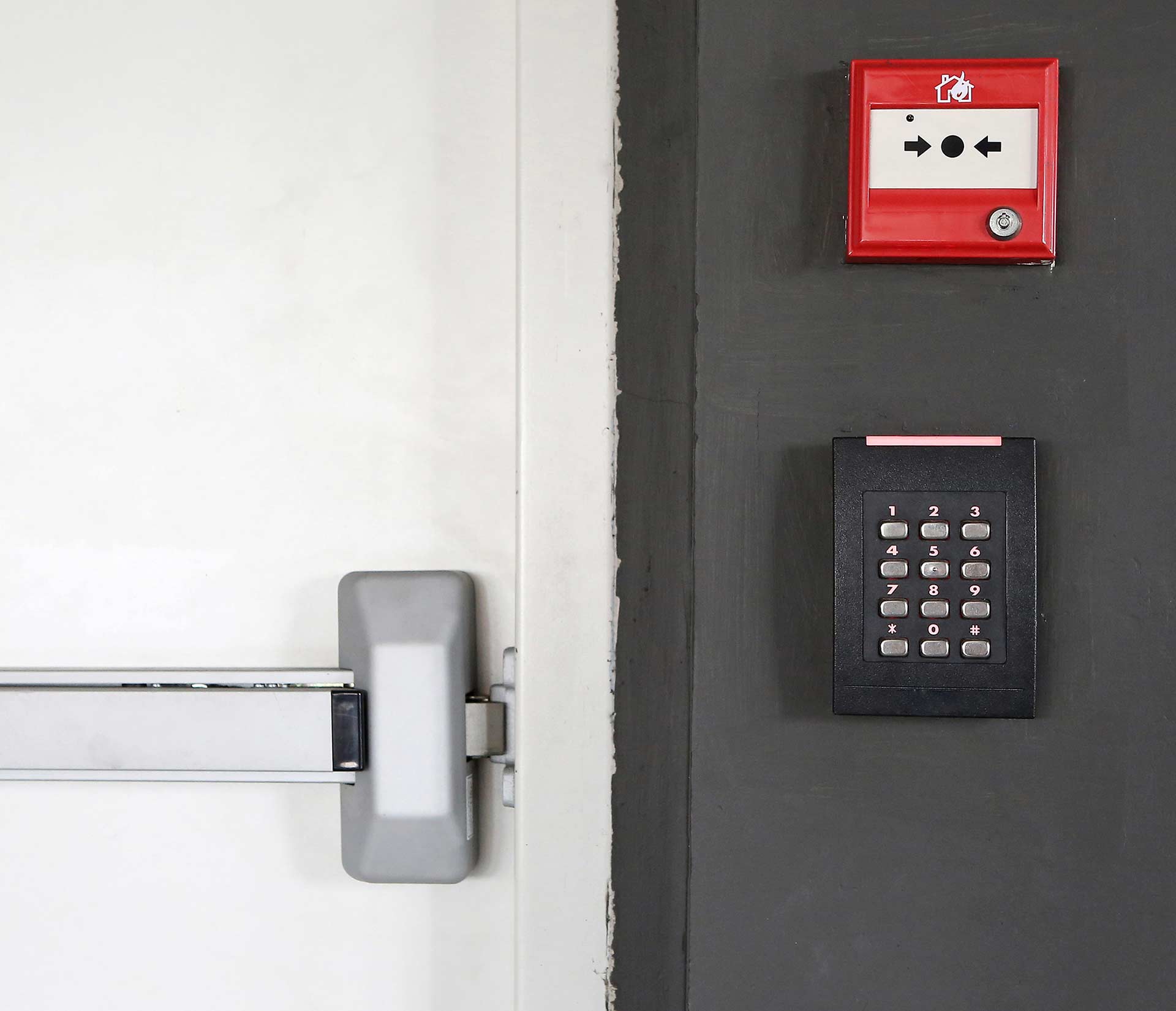Home>Home Security and Surveillance>What Is The Best Intrusion Detection System?


Home Security and Surveillance
What Is The Best Intrusion Detection System?
Modified: March 21, 2024
Looking for the best home security and surveillance system? Discover the top-rated intrusion detection system to protect your property and loved ones.
(Many of the links in this article redirect to a specific reviewed product. Your purchase of these products through affiliate links helps to generate commission for Storables.com, at no extra cost. Learn more)
Introduction
Welcome to the world of home security and surveillance, where technology meets peace of mind. With the increasing concerns about safety and the need to protect our homes and loved ones, the demand for intrusion detection systems has never been higher.
An intrusion detection system (IDS) is designed to monitor and analyze network or system activities, looking for signs of unauthorized access, malicious activities, or policy violations. It acts as a virtual watchdog, constantly monitoring your home and alerting you of any suspicious behavior.
But with so many options available in the market, choosing the best intrusion detection system for your home can seem like a daunting task. That’s where we come in. In this article, we will explore the key factors to consider when selecting an IDS and compare some of the top systems available today.
Before we dive into the specifics, it’s important to understand how intrusion detection systems work. IDS can be categorized into two types: network-based and host-based.
Network-based IDS (NIDS) are deployed at the network level and examine network traffic to detect possible intrusions. They analyze network packets, protocols, and patterns to identify any unauthorized access attempts or suspicious behavior. NIDS can be further classified into signature-based and anomaly-based systems.
Host-based IDS (HIDS), on the other hand, reside on individual devices such as computers or servers and monitor their activities for signs of intrusion. They analyze system logs, file changes, and other indicators to detect any unauthorized access or suspicious activity.
Now that you have a basic understanding of IDS, let’s move on to the factors you should consider when selecting an intrusion detection system for your home.
Key Takeaways:
- Choosing the best intrusion detection system for your home involves considering factors like scalability, integration, real-time monitoring, ease of use, and cost. It’s important to research and evaluate options to find the right fit for your security needs.
- Different IDS vendors offer unique features, such as cloud-based solutions, advanced threat detection, and simplified setups. Understanding these features and considering your specific requirements can help you make an informed decision for your home security.
Understanding Intrusion Detection Systems
Before delving into the details of selecting the best intrusion detection system, it’s essential to have a clear understanding of how these systems work and the benefits they provide.
As mentioned earlier, intrusion detection systems are designed to monitor and analyze network or system activities to identify any signs of unauthorized access or malicious behavior. By continuously monitoring your home network, IDS can help prevent cyber attacks, protect sensitive data, and ensure the overall security of your home.
There are several components that make up an intrusion detection system:
- Sensors: Sensors act as the eyes and ears of the IDS. They monitor network traffic or system activities and collect data for analysis.
- Analyzers: Analyzers are responsible for analyzing the data collected by the sensors. They use various techniques, such as signature-based detection or anomaly-based detection, to identify potential intrusions.
- Alerting System: Once an intrusion is detected, the IDS alerts the homeowner or security personnel through various means, such as email notifications or mobile app notifications.
- Management Console: The management console is where the homeowner or security personnel can view and manage the alerts generated by the IDS. It provides a user-friendly interface to monitor the system’s status and configure settings.
Now let’s take a closer look at the two main types of intrusion detection systems: network-based IDS (NIDS) and host-based IDS (HIDS).
Network-based IDS (NIDS):
NIDS are deployed at the network level and analyze network traffic to detect any unauthorized access attempts or suspicious behavior. They examine network packets, protocols, and patterns to identify potential intrusions. NIDS can be either signature-based or anomaly-based.
– Signature-based NIDS: These systems compare network traffic against a database of known attack signatures. If a packet matches a known signature, the NIDS raises an alert. This approach is effective in detecting known attacks, but it may not be able to detect new or evolving threats.
– Anomaly-based NIDS: These systems establish a baseline of normal network behavior and identify any deviations from this baseline. They use machine learning algorithms to detect patterns that are uncommon or suspicious. Anomaly-based NIDS are more effective in detecting unknown or emerging threats.
Host-based IDS (HIDS):
HIDS reside on individual devices, such as computers or servers, and monitor their activities for signs of intrusion. They analyze system logs, file changes, and other indicators to detect any unauthorized access or suspicious activity. HIDS provide a higher level of visibility into specific devices and can detect attacks that may bypass network-based IDS.
Now that you have a better understanding of intrusion detection systems, let’s move on to the factors you should consider when selecting the best system for your home security needs.
Factors to Consider in Choosing an Intrusion Detection System
When it comes to selecting an intrusion detection system (IDS) for your home security, there are several key factors that you should carefully consider to ensure you choose the best option for your needs. Let’s explore these factors in detail:
- Scalability: Consider the scalability of the IDS. Will it be able to accommodate your future needs? As your home network expands and the number of connected devices increases, you’ll want an IDS that can scale accordingly.
- Integration: Evaluate the compatibility and integration options of the IDS with your existing security infrastructure. Ensure that it can seamlessly integrate with your home security system, cameras, and other devices.
- Real-time Monitoring: Look for an IDS that offers real-time monitoring capabilities. The ability to monitor network traffic and system activities in real-time allows for immediate detection and response to potential threats.
- Ease of Use: Consider the user-friendliness of the IDS. A system with a user-friendly interface and intuitive controls will make it easier for you to manage and configure the settings. Look for systems that offer a centralized management console for easy access and control.
- Alerting Mechanisms: Check the alerting mechanisms of the IDS. Ideally, it should provide multiple channels for alert notifications, such as email, SMS, or mobile app notifications. This ensures that you are promptly informed of any potential security breaches.
- Customization: Look for an IDS that allows for customization. Different homes have different security needs, so having the ability to configure and customize the IDS according to your specific requirements is important.
- Accuracy: Evaluate the accuracy of the IDS in detecting and differentiating between legitimate network activities and potential intrusions. A system that produces a low rate of false positives and false negatives is crucial to avoid unnecessary alerts or missing actual threats.
- Support and Updates: Consider the support and updates provided by the IDS vendor. Are regular updates and patches released to address emerging threats? Does the vendor provide reliable customer support to assist you in case of any issues or queries?
- Cost: Lastly, consider the cost-effectiveness of the IDS. While it’s important to invest in a reliable and robust system, ensure that it aligns with your budget and provides good value for money in terms of features and performance.
By carefully considering these factors, you can make an informed decision when choosing an intrusion detection system that meets your home security needs. In the next section, we will compare some of the top intrusion detection systems available in the market today.
Comparison of Top Intrusion Detection Systems
Now that you have a better understanding of the key factors to consider when choosing an intrusion detection system (IDS), let’s compare some of the top systems available in the market today. Keep in mind that the best IDS for your home will depend on your specific needs and preferences.
1. Vendor A:
Vendor A offers a comprehensive network-based IDS solution with both signature-based and anomaly-based detection capabilities. Their system provides real-time monitoring and customizable alerting mechanisms, ensuring prompt notifications of any suspicious activities. Vendor A’s IDS also integrates seamlessly with existing security infrastructure and offers a user-friendly management console for easy configuration. However, it may have a steeper learning curve for novice users.
2. Vendor B:
Vendor B specializes in host-based IDS and provides a reliable system for monitoring individual devices within your home network. Their IDS offers advanced file integrity monitoring and system log analysis to detect unauthorized access or suspicious behavior. Vendor B’s IDS is known for its ease of use and intuitive interface, making it suitable for users of all levels. However, it may have limitations in scaling for larger networks.
3. Vendor C:
Vendor C offers a cloud-based IDS solution, providing the flexibility of remote monitoring and management. Their system utilizes machine learning algorithms for anomaly detection and offers real-time alerts through various channels. Vendor C’s IDS emphasizes scalability and can accommodate networks of all sizes. However, some users may have concerns about data privacy and reliance on internet connectivity.
4. Vendor D:
Vendor D specializes in advanced threat detection and prevention. Their IDS incorporates machine learning, behavior analytics, and threat intelligence to detect both known and emerging threats. Vendor D’s system offers extensive customization options and provides regular updates to stay ahead of evolving threats. However, it may have a higher price point compared to other options.
5. Vendor E:
Vendor E offers an IDS solution specifically designed for small home networks. Their system focuses on simplicity and affordability without compromising on security. Vendor E’s IDS provides basic network monitoring and alerts for unauthorized access attempts. While it may lack advanced features, it is suitable for homeowners on a budget or with limited security needs.
Before making a decision, it’s essential to conduct further research on each vendor, review customer feedback, and consider your specific requirements. Remember that the best intrusion detection system is one that aligns with your home security needs and offers the necessary features, scalability, and reliability.
In the next sections, we will dive deeper into the features and capabilities of each vendor to help you make a more informed decision.
Vendor A Features and Capabilities
Vendor A is a leading provider of intrusion detection systems (IDS) that offers a wide range of features and capabilities to enhance your home security. Let’s explore some of the key features and capabilities that Vendor A’s IDS provides:
- Signature-Based Detection: Vendor A’s IDS includes a comprehensive signature-based detection system. It compares network traffic against a database of known attack signatures, allowing it to quickly identify and alert you to any known threats.
- Anomaly-Based Detection: In addition to signature-based detection, Vendor A’s IDS incorporates anomaly-based detection. It establishes a baseline of normal network behavior and identifies any deviations from that baseline. This allows it to detect unknown or emerging threats that may not have a specific signature.
- Real-time Monitoring: Vendor A’s IDS offers real-time monitoring capabilities, constantly analyzing network traffic to identify potential intrusions. This ensures that any suspicious activities are detected and addressed promptly, minimizing the risk of security breaches.
- Customizable Alerting Mechanisms: The IDS provides customizable alerting mechanisms, allowing you to set up notifications according to your preferences. Whether it’s email alerts, SMS alerts, or mobile app notifications, Vendor A’s system ensures that you receive timely notifications of any potential security threats.
- Integration with Existing Security Infrastructure: Vendor A’s IDS integrates seamlessly with your existing security infrastructure, including cameras, alarms, and other devices. This enables a unified approach to home security, providing you with a centralized system to monitor and manage all aspects of your home’s security.
- User-Friendly Management Console: The IDS is accompanied by a user-friendly management console that allows for easy configuration and monitoring. The console provides a clear and intuitive interface, making it simple for users of all levels of technical expertise to navigate and manage the system effectively.
- Scalability: Vendor A’s IDS is designed to scale with your home network. Whether you have a small network or a large network with numerous connected devices, the system can accommodate your needs. This ensures that your IDS remains effective and reliable as your home security requirements evolve over time.
- Ongoing Support and Updates: Vendor A provides regular updates and patches to ensure that your IDS remains up-to-date and protected against new threats. They also offer reliable customer support to assist you with any questions or issues that may arise.
Vendor A’s IDS offers a robust and comprehensive solution for home intrusion detection, with a focus on both signature-based and anomaly-based detection. Its real-time monitoring, customizable alerting mechanisms, and user-friendly management console make it a standout option for homeowners looking to enhance their home security. Additionally, its integration capabilities and scalability ensure that it can adapt to your changing security needs.
In the following sections, we will explore the features and capabilities of other top IDS vendors to provide you with a well-rounded understanding of your options.
When choosing an intrusion detection system, look for one that offers both network and host-based monitoring, real-time alerts, and regular updates to keep up with new threats.
Vendor B Features and Capabilities
Vendor B is a leading provider of intrusion detection systems (IDS) that specializes in host-based IDS solutions. Let’s explore some of the key features and capabilities that Vendor B’s IDS provides:
- Host-Based Monitoring: Vendor B’s IDS focuses on monitoring individual devices within your home network. By analyzing system logs, file changes, and other indicators, it can detect unauthorized access or suspicious activity on specific devices.
- File Integrity Monitoring: One of the key features of Vendor B’s IDS is its advanced file integrity monitoring capability. It tracks changes made to critical files and verifies their integrity, ensuring that no malicious modifications or unauthorized alterations go undetected.
- System Log Analysis: The IDS analyzes system logs, including login attempts, application activity, and system processes, to identify any anomalies or signs of intrusion. This helps in detecting and responding to potential security breaches in a timely manner.
- User-Friendly Interface: Vendor B’s IDS offers a user-friendly interface, making it easy to navigate and manage the system. Whether you are a novice user or an experienced security professional, the intuitive controls and well-designed interface simplify the configuration and monitoring of the IDS.
- Real-Time Alerts: The IDS provides real-time alerts when it detects suspicious activities or potential security breaches. You can configure the alerting mechanism to receive notifications via email, SMS, or through a mobile app, ensuring that you are promptly informed of any security incidents.
- Scalability: Vendor B’s IDS is designed to scale with your home network. Whether you have a small network with a few devices or a larger network with multiple devices, the IDS can accommodate your needs. This ensures that you can expand your security coverage as your network grows.
- Integration with Existing Security Infrastructure: The IDS seamlessly integrates with your existing security infrastructure, allowing for a unified approach to home security. It can work in conjunction with other security devices such as cameras, alarms, or access control systems, ensuring comprehensive protection for your home.
- Regular Updates and Support: Vendor B provides regular updates and patches to address emerging threats and vulnerabilities. They also offer reliable customer support, assisting you with any questions or issues that may arise during the implementation and usage of the IDS.
Vendor B’s IDS specializes in host-based intrusion detection, focusing on monitoring individual devices within your home network. Its advanced file integrity monitoring and system log analysis capabilities ensure that any unauthorized access or suspicious activity is detected, allowing for quick response and mitigation measures.
The user-friendly interface, real-time alerts, and seamless integration with existing security infrastructure make Vendor B’s IDS a valuable addition to any home security system. Additionally, its scalability and regular updates ensure that your IDS remains effective and up-to-date as your home network and security needs evolve over time.
In the following sections, we will explore the features and capabilities of other leading IDS vendors to provide you with a comprehensive understanding of your options.
Vendor C Features and Capabilities
Vendor C is a prominent provider of intrusion detection systems (IDS) that offers a unique cloud-based IDS solution. Let’s explore some of the key features and capabilities that Vendor C’s IDS provides:
- Cloud-Based Solution: Vendor C’s IDS operates in the cloud, offering the flexibility of remote monitoring and management. This allows you to access and manage your IDS from anywhere, providing convenience and peace of mind.
- Machine Learning-Based Anomaly Detection: The IDS utilizes machine learning algorithms for anomaly detection. It establishes a baseline of normal network behavior and identifies any deviations or suspicious patterns. This enables the detection of both known and emerging threats.
- Real-Time Alerts and Notifications: Vendor C’s IDS provides real-time alerts and notifications when suspicious activities are detected. You can configure the alerting mechanism to receive notifications through email, SMS, or mobile app notifications, ensuring that you stay informed of any potential security breaches.
- Scalability and Flexibility: The cloud-based nature of Vendor C’s IDS allows for scalability, accommodating networks of all sizes. Whether you have a small home network or a larger network with numerous connected devices, the IDS can scale according to your needs.
- Integration with Third-Party Services: Vendor C’s IDS offers integration capabilities with other third-party security services and systems. This allows for a comprehensive and cohesive approach to home security, enabling you to consolidate and manage multiple security solutions effectively.
- Security and Privacy: Vendor C prioritizes the security and privacy of your data. They implement robust encryption protocols and ensure compliance with industry standards to protect your sensitive information from unauthorized access.
- Regular Updates and Maintenance: Vendor C provides regular updates and maintenance to keep their IDS up-to-date with the latest security threats and vulnerabilities. This ensures that your system remains protected against emerging risks.
- Support and Assistance: The vendor offers reliable customer support to assist you with any inquiries or issues you may encounter. Their support team is knowledgeable and responsive, providing you with the necessary assistance to ensure the smooth operation of your IDS.
Vendor C’s IDS stands out with its cloud-based solution, providing flexibility, scalability, and the convenience of remote monitoring and management. The utilization of machine learning algorithms for anomaly detection allows for effective identification of both known and emerging threats.
The real-time alerts, integration capabilities, and strong commitment to security and privacy make Vendor C’s IDS a compelling choice for homeowners seeking a comprehensive and reliable intrusion detection system. Additionally, the regular updates and maintenance, along with their responsive customer support, ensure that you receive ongoing assistance and protection.
In the following sections, we will explore the features and capabilities of other leading IDS vendors to help you make an informed decision for your home security needs.
Vendor D Features and Capabilities
Vendor D is a prominent provider of intrusion detection systems (IDS) that specializes in advanced threat detection and prevention. Let’s explore some of the key features and capabilities that Vendor D’s IDS provides:
- Advanced Threat Detection: Vendor D’s IDS incorporates advanced threat detection techniques, including machine learning, behavior analytics, and threat intelligence. This enables the system to detect and mitigate both known and emerging threats.
- Behavioral Analytics: The IDS analyzes the behavior of devices and users within your home network to identify any suspicious or abnormal activities. By monitoring for deviations from normal patterns, it can detect potential intrusions that go beyond traditional signature-based detection.
- Threat Intelligence Integration: Vendor D’s IDS incorporates threat intelligence feeds from trusted sources. This enriched data helps it stay updated with the latest threats and ensures more accurate and effective detection of malicious activities.
- Real-Time Alerts and Response: When a potential security threat is detected, the IDS provides real-time alerts and notifications. This ensures that you are promptly informed of any suspicious activities, allowing you to take immediate action to mitigate the threat.
- Customizable Policies and Rules: The IDS allows for the customization of policies and rules based on your specific security requirements. You can define thresholds, set up blacklists or whitelists, and configure other parameters to align the system with your home’s unique security needs.
- Regular Updates and Patches: Vendor D provides regular updates and patches to address emerging threats and vulnerabilities. These updates ensure that your IDS remains up-to-date and protected against evolving risks.
- Integration with Security Ecosystem: The IDS integrates seamlessly with your existing security ecosystem, including cameras, access control systems, and other devices. This allows for unified monitoring and management, ensuring comprehensive protection for your home.
- Comprehensive Reporting and Analytics: Vendor D’s IDS provides comprehensive reporting and analytics capabilities. It generates detailed reports on network activities, threat detections, and system performance, helping you gain insights and make informed decisions to strengthen your home security.
Vendor D’s IDS offers an advanced and comprehensive approach to intrusion detection, leveraging advanced threat detection techniques and behavior analytics. The integration of threat intelligence and the customizable policies and rules allow for a more personalized and effective security solution.
The real-time alerts and response, regular updates, and integration capabilities ensure that your IDS remains proactive and adaptive to emerging threats. The comprehensive reporting and analytics features enable you to gain valuable insights into your home network and enhance your security posture.
In the following sections, we will explore the features and capabilities of other top IDS vendors to provide you with a well-rounded understanding of your options.
Vendor E Features and Capabilities
Vendor E is a provider of intrusion detection systems (IDS) that specializes in offering a solution specifically designed for small home networks. Let’s explore some of the key features and capabilities that Vendor E’s IDS provides:
- Simple and Affordable: Vendor E’s IDS focuses on simplicity and affordability, making it an accessible option for homeowners on a budget or with limited security needs. It offers basic network monitoring capabilities without compromising on essential security features.
- Network Monitoring: The IDS monitors network traffic for any unauthorized access attempts or suspicious activities. It analyzes network packets and protocols to identify potential intrusions and anomalies.
- User-Friendly Interface: Vendor E’s IDS offers a user-friendly interface that is easy to navigate and understand. Whether you are a novice user or have limited technical knowledge, the intuitive controls and straightforward design make it simple to configure and manage the IDS.
- Alerting Mechanisms: The IDS provides alerting mechanisms to notify you of any potential security breaches. While the customization options may be limited in comparison to other solutions, it ensures that you are promptly informed of any suspicious activities through email or SMS alerts.
- Scalability: Vendor E’s IDS is designed for scalability, accommodating small home networks and growing alongside your security needs. It can adapt as your network expands, allowing you to add more devices and increase your security coverage as required.
- Protection for Basic Security Needs: The IDS is designed to provide protection for basic security needs. It focuses on detecting unauthorized access attempts and suspicious activities, ensuring that your home network remains secure from common threats.
- Simplified Setup and Maintenance: Vendor E’s IDS offers a simplified setup process, allowing you to get started quickly and easily. It also requires minimal maintenance, making it suitable for users who prefer a hands-off approach to IDS management.
- Affordable Pricing Model: Vendor E’s IDS is priced competitively, providing an affordable option for homeowners who prioritize a cost-effective solution without compromising on basic security features. It offers good value for money for those with limited security needs.
Vendor E’s IDS caters specifically to homeowners with small home networks and limited security needs. The focus on simplicity, affordability, and basic network monitoring allows for an accessible and cost-effective solution.
While it may have fewer customization options and advanced features compared to more robust IDS solutions, Vendor E’s IDS provides essential security features, scalability, and a user-friendly interface. It offers peace of mind for homeowners on a budget or those with basic security requirements.
In the following sections, we will explore the features and capabilities of other leading IDS vendors to help you make an informed decision to enhance your home security.
Read more: Where To Place Intrusion Detection Systems
Conclusion
Choosing the best intrusion detection system (IDS) for your home security is a crucial decision that requires careful consideration. With the increasing concerns about safety and the need to protect our homes and loved ones, IDS play a vital role in detecting and preventing potential threats and intrusions.
In this article, we explored the key factors to consider when selecting an IDS, including scalability, integration, real-time monitoring, ease of use, alerting mechanisms, customization options, accuracy, support, and cost. By evaluating these factors, you can choose an IDS that aligns with your specific needs and provides comprehensive protection for your home network. Remember, the best IDS may vary depending on your home’s size, budget, and security requirements.
We also compared some of the top IDS vendors and discussed their features and capabilities. Vendor A offers a comprehensive network-based IDS solution with both signature-based and anomaly-based detection. Vendor B specializes in host-based IDS and provides advanced file integrity monitoring and system log analysis. Vendor C offers a cloud-based IDS solution with flexibility and remote monitoring capabilities. Vendor D focuses on advanced threat detection techniques and behavioral analytics. Vendor E provides a simplified and affordable solution specifically designed for small home networks.
It’s essential to thoroughly research each vendor, review customer feedback, and consider your specific requirements before making a final decision. Evaluating the features, scalability, ease of use, integration options, and ongoing support can help you choose the best IDS for your home security needs.
Remember, implementing an IDS is just one part of a comprehensive home security strategy. It is important to complement it with other security measures such as strong passwords, regular software updates, firewalls, and physical security systems to ensure holistic protection for your home.
By selecting the right intrusion detection system and implementing a robust home security plan, you can enhance the safety and peace of mind for you and your loved ones. Stay vigilant, stay informed, and invest in a reliable IDS to safeguard your home network from potential threats.
Frequently Asked Questions about What Is The Best Intrusion Detection System?
Was this page helpful?
At Storables.com, we guarantee accurate and reliable information. Our content, validated by Expert Board Contributors, is crafted following stringent Editorial Policies. We're committed to providing you with well-researched, expert-backed insights for all your informational needs.













